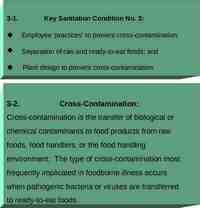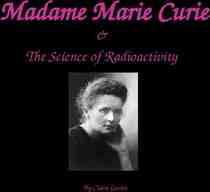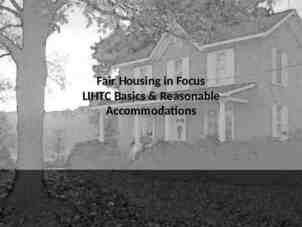©2014. Brooks/Cole, Cengage Learning. All rights reserved.
15 Slides1.63 MB

2014. Brooks/Cole, Cengage Learning. All rights reserved. For classroom use only. Diane R. Gehart Mastering Competencies in Family Therapy (2nd ed.) Chapter 15: Treatment Planning

A specific client. A specific problem. A particular therapist–client relationship. Plan should be based on clinical experience, current research, and standards of practice. 2014. Brooks/Cole, Cengage Learning. All rights reserved. For classroom use only. Diane R. Gehart Treatment plans Address the problems you have identified in the case conceptualization and clinical assessment. Numerous good plans can be developed for any one client. Therapist may choose which theory and techniques are the best fit for: Mastering Competencies in Family Therapy (2nd ed.) Selecting a Path (Step 3)

Symptom-based treatment plans Focus solely on client’s medical symptoms. These plans are relevant to those in the medical community; they do not help therapists conceptualize treatment in the most useful ways. Danger of symptom-based treatment planning is that the therapist will underutilize theory, focus on symptoms, and forget to assess the larger picture. 2014. Brooks/Cole, Cengage Learning. All rights reserved. For classroom use only. Diane R. Gehart Treatment planning came from the medical field. Mastering Competencies in Family Therapy (2nd ed.) A Brief History

Uses theory to create more clinically-relevant treatment plans than the symptom model offers. Difficult for most students to address diagnostic issues and clinical symptoms in these theory-based plans because the language of these two systems is radically different. Solution A new “both/and” model, called the “clinical treatment plan,” which draws from the best of theory-based and symptom-based treatment plans and adds elements of measurability. 2014. Brooks/Cole, Cengage Learning. All rights reserved. For classroom use only. Diane R. Gehart Theory-based treatment plan Mastering Competencies in Family Therapy (2nd ed.) A Brief History (cont.)

Includes the following parts: Introduction Therapeutic tasks Client goals Interventions Client perspective 2014. Brooks/Cole, Cengage Learning. All rights reserved. For classroom use only. Diane R. Gehart Provide a straightforward, comprehensive overview of treatment. Mastering Competencies in Family Therapy (2nd ed.) Clinical Treatment Plans

2014. Brooks/Cole, Cengage Learning. All rights reserved. For classroom use only. Diane R. Gehart Therapeutic tasks The “training wheels” of the plan Typically not be included in plans you send to insurance companies or third-party payers Formulaic One of the key places where therapists must adjust their approach to address diversity issues Mastering Competencies in Family Therapy (2nd ed.) Writing Useful Therapeutic Tasks

Refer for medical/psychiatric evaluation; connect with needed community resources. Rule out substance abuse, violence, and medical issues. Working phase Monitor the working alliance. Monitor client progress. Closing phase Therapist makes themselves “unnecessary” in the client’s life. 2014. Brooks/Cole, Cengage Learning. All rights reserved. For classroom use only. Diane R. Gehart Initial phase Establish a therapeutic relationship. Assess individual, family, and social dynamics. Develop treatment goals. Case management: Mastering Competencies in Family Therapy (2nd ed.) Writing Useful Therapeutic Tasks

Examples: Use of humor with teens and men. Use of personalismo with Hispanic/Latino clients. Including spirituality and religious believes and resources. Use of present-focused, problem-focused approaches with clients who do not value exploring the past. Assessing family-of-choice with gay, lesbian, bisexual, or transgendered clients. 2014. Brooks/Cole, Cengage Learning. All rights reserved. For classroom use only. Diane R. Gehart For each treatment task, you should also note how you will address diversity issues such as culture, ethnicity, race, sexual orientation, gender orientation, religion, language, ability, age, gender, etc. Mastering Competencies in Family Therapy (2nd ed.) Diversity and Treatment Tasks

2014. Brooks/Cole, Cengage Learning. All rights reserved. For classroom use only. Diane R. Gehart Step 1: Case conceptualization and clinical assessment Step 2: Crises or pressing issues Step 3: Themes from the case conceptualization and clinical assessment Step 4: Long-term goals Step 5: Complete the goal writing worksheet Mastering Competencies in Family Therapy (2nd ed.) Writing Useful Client Goals

Start with a key concept or assessment area from the theory of choice. Start with “increase” or “decrease,” followed by a description using language from the chosen theory about what is going to change (this comes from the case conceptualization). Link to symptoms. Describe what symptoms will be addressed by changing the personal or relational dynamic (this comes from the clinical assessment). Use the client’s name Using a name (or equivalent confidential notation) ensures that it is a unique goal rather than a formulaic one. 2014. Brooks/Cole, Cengage Learning. All rights reserved. For classroom use only. Diane R. Gehart Three basic components: Mastering Competencies in Family Therapy (2nd ed.) The Goal Writing Process

The client and therapist should know when the goal is achieved. Starting the goal with “increase/ decrease” helps in this effort. Specify criterion for goal to be met. Ex.: Able to sustain for a period of weeks months. 2014. Brooks/Cole, Cengage Learning. All rights reserved. For classroom use only. Diane R. Gehart Most third-party payers require goals be “measurable.” Mastering Competencies in Family Therapy (2nd ed.) Writing Measurable Goals

Client goals generally involve stabilizing crisis symptoms. Working phase Address the dynamics that create and/or sustain the symptoms and problems for which clients came to therapy. Goals that most interest third-party payers. Closing phase Larger, more global issues that clients bring to therapy and/or move the client toward greater “health” as defined by the therapist’s theoretical perspective. 2014. Brooks/Cole, Cengage Learning. All rights reserved. For classroom use only. Diane R. Gehart Initial phase Mastering Competencies in Family Therapy (2nd ed.) Client Goals

Use specific interventions from chosen theory. Make interventions specific to client. Include exact language when possible. 2014. Brooks/Cole, Cengage Learning. All rights reserved. For classroom use only. Diane R. Gehart Guidelines for writing interventions Mastering Competencies in Family Therapy (2nd ed.) Writing Useful Interventions

Ensure that there is a shared understanding about the goals, strategies for change, and outcomes. Many agencies have moved to having clients sign the treatment plan to ensure agreement. To avoid overwhelming the client, therapist should include only the client goals from the treatment plan. 2014. Brooks/Cole, Cengage Learning. All rights reserved. For classroom use only. Diane R. Gehart Considering the client’s perspective is crucial to designing an effective plan. Therapists should discuss the plan directly with clients. Mastering Competencies in Family Therapy (2nd ed.) Client Perspectives

Therapy rarely goes according to plan, but treatment plans help by: Enabling therapists think through which dynamics need to be changed and how. Providing therapists with a clear understanding of the client situation so they can quickly and skillfully address new crisis issues or stressors. Giving therapists a sense of confidence and clarity of thought that make it easier to respond to new issues. Grounding therapists in their theory and in their understanding of how their theory relates to clinical symptoms. 2014. Brooks/Cole, Cengage Learning. All rights reserved. For classroom use only. Diane R. Gehart Yes! and No! Mastering Competencies in Family Therapy (2nd ed.) Do Plans Make a Difference?






